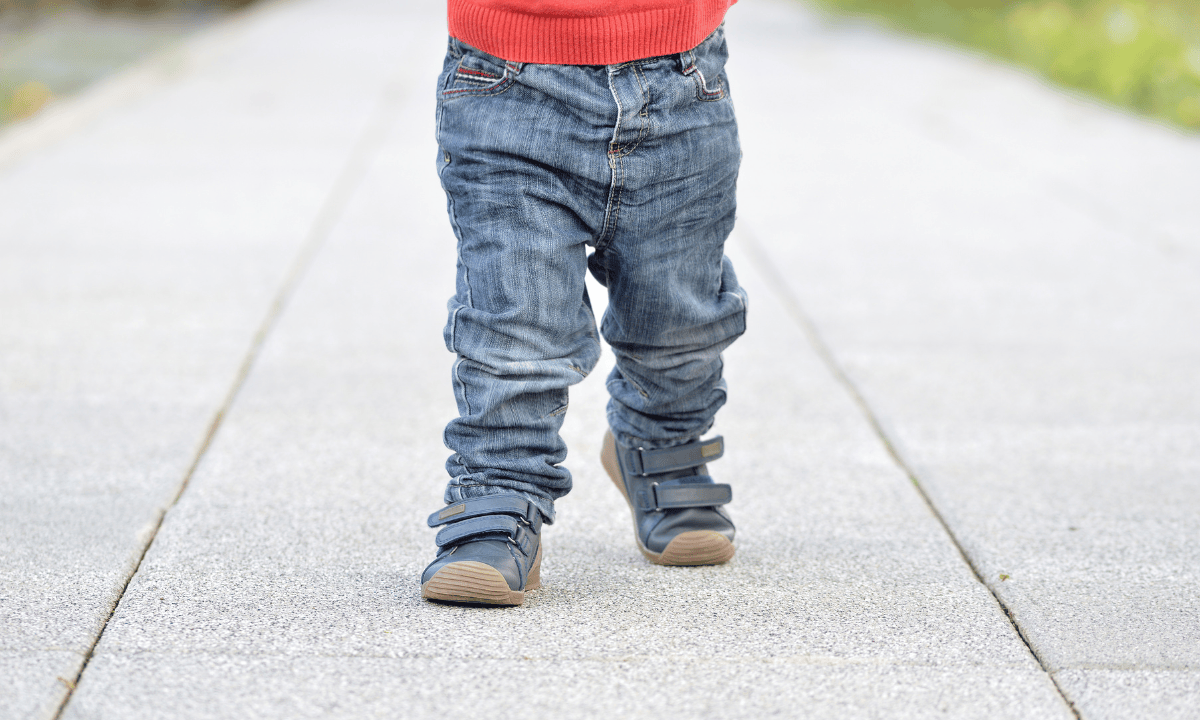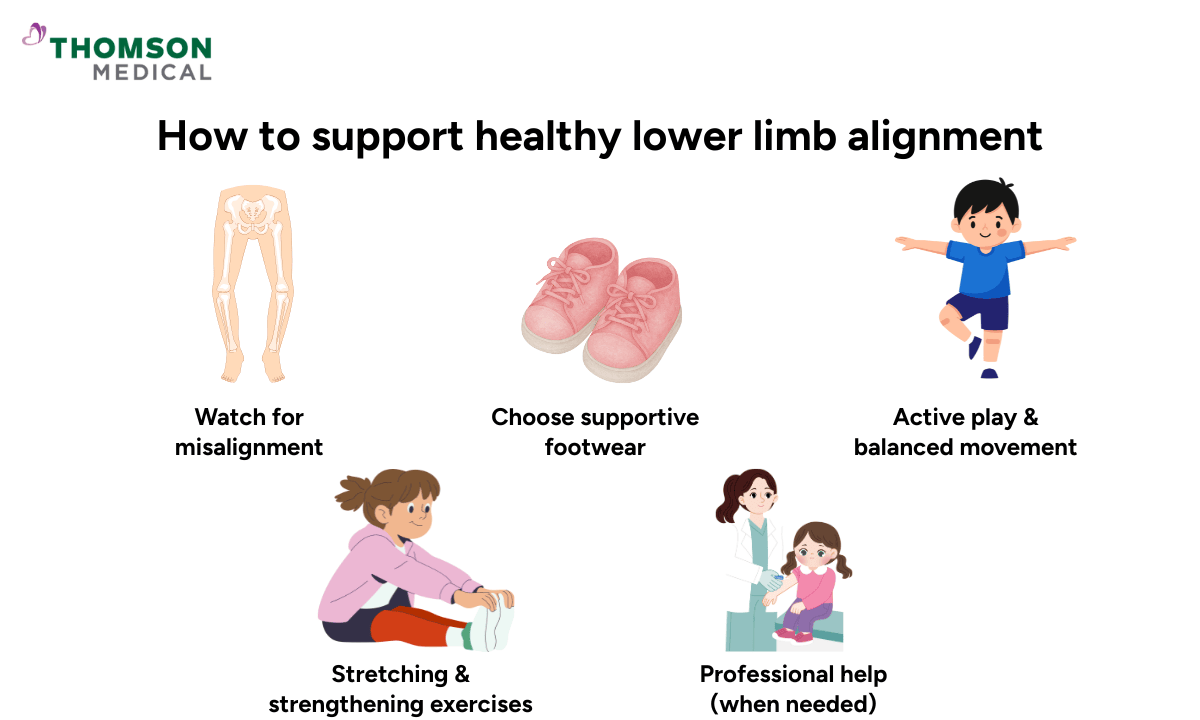Watching your child take his first steps, run across the playground, or climb the stairs on his own can feel magical. But it’s also perfectly natural to pause and wonder when something about his movement looks a little different. Maybe his steps seem slightly clumsy, his knees turn inwards, or his feet appear flatter than an adult’s.
If you’ve ever noticed these things and found yourself worrying, you’re certainly not alone. In fact, it means you’re already paying close, loving attention to your child’s lower limb alignment – an important part of children’s growth.
What is lower limb alignment?
Lower limb alignment describes how your child’s hips, knees, ankles, and feet line up when he stands, walks, or runs. When everything is well aligned, the legs share weight evenly, the joints move smoothly, and your little one can play and explore with ease.
As your child grows, his alignment changes naturally. It’s common for toddlers to look a little bow-legged, for preschoolers to go through a knock-kneed phase, and for many young children to have flat feet. These patterns are usually normal and often improve on their own.
But if something seems persistent, causes discomfort, or doesn’t follow expected growth patterns, it can place extra strain on their developing joints and muscles.
Why lower limb alignment matters for growing kids

When your child’s legs are aligned well, everything from posture to balance tends to fall into place. But when things are slightly off, it can affect more than just the way he walks.
Here are some reasons why lower limb alignment plays such an important role in your child’s growing years.
Influence your child’s posture
When the legs aren’t aligned well, the rest of the body has to work harder to stay balanced. You might notice slouching, uneven shoulders, or a subtle tilt in your child’s hips. Over time, these habits may become more fixed and harder to correct.
Shape the way your child walks, runs, and plays
Changes in alignment can affect how steady or coordinated your child feels. You may see:
Knees turning inward (knock knees)
Feet that look very flat
Feet turning inward or outward during walking
These differences can make your child trip more easily or tire quickly. Some little ones may avoid active play simply because it feels uncomfortable.
Put extra pressure on growing joints
When weight isn’t evenly shared between the legs, certain joints, including the knees, hips, or ankles, take on more pressure than they should. Over time, this can lead to aches, swelling, or future joint concerns if left unaddressed.
Lead to muscle imbalances
If one part of the leg works harder to keep the body steady, some muscles become tight while others become weak. This can affect your child’s strength, flexibility, balance; lead to fatigue and discomfort during physical activity; and increase the risk of muscle strain and injuries
Contribute to long-term developmental concerns
Persistent misalignment can sometimes lead to ongoing back pain, changes in foot shape, or chronic discomfort in adolescence. Early awareness and guidance can prevent many of these challenges and help your child move freely and confidently.
Strong, confident movement begins with small steps, and you don’t have to take those steps alone. If you are unsure about your child’s development or gait, consult our paediatricians from Thomson Paediatric Centre for professional guidance. Book your appointment today!
Our paediatric orthopaedics
Loading...
What parents can do to support healthy lower limb alignment

Taking care of your child’s legs doesn’t require complicated routines. Small, mindful habits practised with consistency are key to supporting healthy lower limb alignment.
Watch for early signs of misalignment
Pay close attention to how your child walks, runs, and stands.
Look out for:
Knees that angle inward or outward excessively
Flat feet or high arches
Toe-walking or out-toeing
Complaints of leg fatigue or pain
These signs don’t always mean something is wrong, but they tell you it may be worth looking more closely.
Choose supportive and properly fitted footwear
The right pair of shoes can gently guide your child’s natural alignment.
Look for:
Firm heel support
Proper arch support
Avoid shoes that are overly flexible or completely flat
Remember to replace worn-out shoes regularly to help maintain proper support, as your child grows quickly.
Encourage active play and balanced movement
Movement is one of the best ways for your child to build strength, balance, and coordination.
Encourage activities such as:
Swimming
Cycling
Climbing
Barefoot play (on safe surfaces)
At the same time, try to limit long periods of sitting or screen time, especially in awkward positions that place strain on the hips or legs.
Incorporate stretching and strengthening exercises
Many children benefit from simple exercises that improve flexibility and build strength in areas that support alignment, especially the core, hips, and legs.
A paediatric specialist or physiotherapist can tailor fun, child-friendly exercises that meet your child’s needs.
Seek professional help when needed
If walking patterns remain unusual, or your child experiences discomfort, a trained specialist can offer gentle, personalised support.
A paediatric physiotherapist or orthopaedic specialist can:
Assess how your child stands, walks, and moves
Identify the underlying causes of misalignment
Create a plan to support healthy growth over time
Your child’s legs carry him through a world full of play, excitement, and discovery. With patient observation, simple daily habits, and expert support when needed, you can help your little one develop strong, healthy, confident movement.
If you’d like clarity, reassurance, or a detailed assessment of your child’s legs, schedule an appointment with Thomson Medical. Our paediatrics will help your little one move freely, comfortably, and joyfully as he grows.
FAQ
What is a normal lower limb alignment?
A normal alignment in children isn’t a single fixed shape; it changes as they grow. Toddlers often have bowed legs, which is a natural part of early development. As they get older, this usually shifts into a knock-kneed phase around ages 3 to 5. By about 7 to 8 years old, most children’s legs gradually settle into the straighter alignment seen in adults. These changes are expected and usually correct themselves without treatment.
Why are my 2-year-old legs not straight?
It’s completely normal for a 2-year-old’s legs to appear slightly bowed or curved. At this age, their bones are still developing, and their legs are adjusting to standing and walking. Most children grow out of it naturally as their muscles strengthen and their bones straighten over the next few years.
At what age do bandy legs correct?
Bow legs typically improve on their own by around age 3. As your child grows and begins walking more confidently, his leg shape usually shifts towards a straighter alignment.
How do you test for leg alignment in children?
A paediatrician or physiotherapist will look at how your child stands, walks, and moves during play. They may gently measure the distance between the knees or ankles, assess foot posture, and check muscle strength or flexibility.
How to fix misaligned legs in children?
Many cases improve naturally as your child grows. When support is needed, it may include strengthening exercises, stretching tight muscles, wearing supportive footwear, or following a physiotherapy programme.
What exercises are good for leg alignment in children?
Exercises that build strength in the hips, thighs, and core, such as bridges, gentle squats, balance games, and stepping exercises, can support healthy leg alignment in children. Stretching tight muscles like the calves and hamstrings is also a beneficial exercise.
The information provided is intended for general guidance only and should not be considered medical advice. For personalised recommendations and advice based on your unique situation, please consult a specialist at Thomson Medical. Request an appointment with Thomson Medical today.
Dr Lam Kai Yet
Orthopaedic Surgery
Thomson Specialists (Thomson Medical Centre)
English
MHC, Adept, Aviva, Singlife and 2 others

